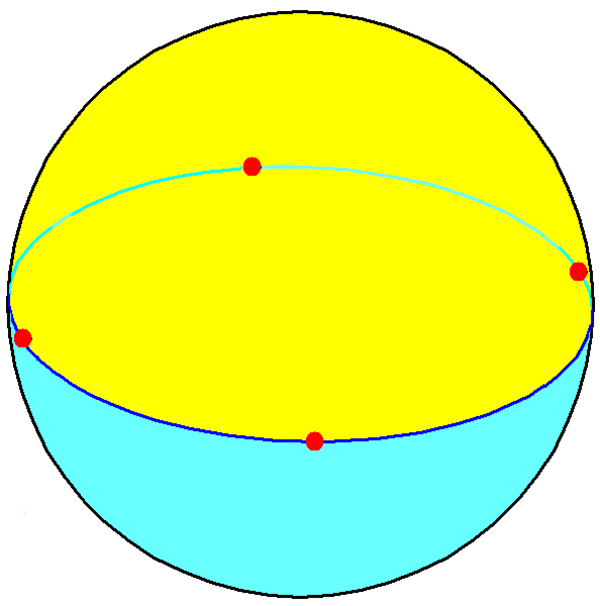The Monty Hall problem
The Monty Hall problem is inspired by an American television game show. There are three doors, and behind one of them, the host of the show, Monty, hides a car. Each of the other two doors hides a goat.
The contestant is asked to pick a door, so that if she finds the car, she wins the game (and the car). Since there are three doors, chances are $1/3$ that she picked the door behind which is the car. But Monty doesn't open yet the door, but he opens one of the remaining doors, revealing a goat. He then asks the contestant either to keep her original choice, or to switch to the other unopened door. The problem is, what should the contestant do?
The first instinct of anybody may be to think that since there are only two remaining doors, it doesn't matter if you switch the door or not, because the chances are $1/2$ in both ways. However, Marilyn vos Savant explained that if the contestant switches the doors, the chances are $2/3$. while if she doesn't switch them, the chances are $1/3$. This is counterintuitive, and the legend says that not even Paul Erdős understood it. You can find on Wikipedia some solutions of this puzzle.
An equivalent puzzle
I will present another, simpler puzzle, and show that it is equivalent to the Monty Hall problem.
Consider again three doors, one hiding a car. The contestant is asked to pick either one of the three doors, or two of them. What is the best choice?
Obviously, the contestant should better choose two doors, rather than one. Since if she thinks that the car is behind door number three, choosing also door number one will only double the chances to win.
But how is this related to the Monty Hall problem? Well, it is, because if you play the Monty Hall problem, you can pick two doors, but don't tell Monty, you just tell you picked the remaining one. When Monty asks if you want to switch, then you switch to the other two doors, and since one is already open, you choose the remaining one. This means that choosing a door and switching is equivalent to choosing the other two doors.
So the Monty Hall problem is actually equivalent to having to choose one or two doors. Not switching is equivalent to choosing one door, and switching is equivalent to choosing two doors. So switching gives indeed probability $2/3$.










